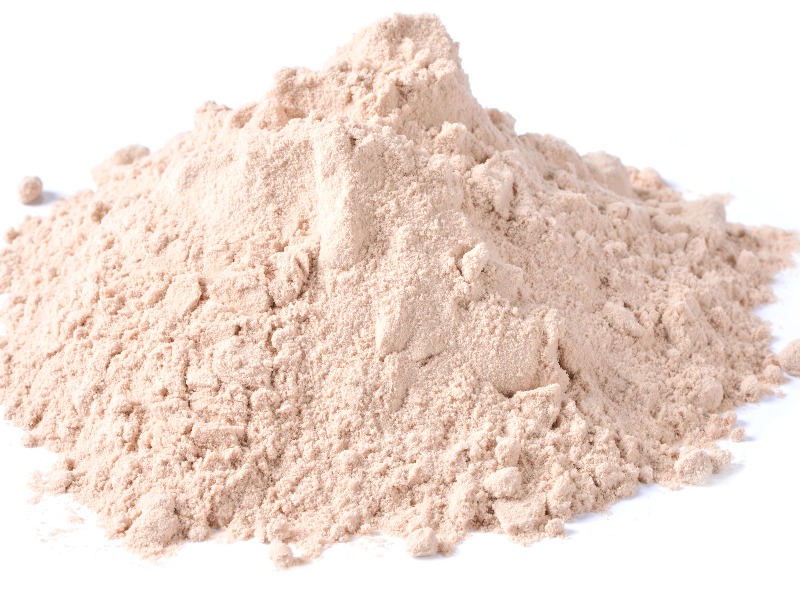

About company
Our history dates back more than 35 years, when our scientists discovered the powerful role that functional plasma-derived proteins play in maintaining the immune function of animals.
Since then, we have obtained extraordinary, consistent and effective results.
Spray-dried plasma (SDP) and red blood cell products are used in animal feed and other industries to add value through their unique properties that positively impact billions of animals each year.
Products
Company News
 Ingredients
Ingredients

6+ MIN





02/02/2024
Spray dried plasma in pet food: The multiple functions of a unique ingredient
The connection between human and pet food production is very important to optimize the use of by-products and minimize environmental impacts. Practically all by-products generated from the processing of meat for human consumption are properly used in the production of rendered animal protein ingredients and other applications in various industrial areas, thereby strengthening the application of a circular economy. Despite its relevance, advancements in the qualitative aspects of ingredients for use in pet food are needed because the quality is still very variable. Furthermore, the development of high nutritional standards for the food segment, such as food safety, high nutritional quality, and the use of ingredients that have functional properties have been a major challenge for the pet food sector today. In this respect, fresh ingredients, enzymatically hydrolyzed and dehydrated by more refined processes, such as lyophilization or spray drying have shown a growing increase in their use in formulations by the Pet Food industry. Image 1: Estimated excretion of dry matter (DM) and crude protein (CP) for each kilogram of ingredient ingested, considering the digestibility of the ingredients (Table 1). The spray-drying process consists in drying liquid products in a spray drying tower, equipped with hot air circulation that generates a hot air circulation that, when in contact with micro-drops of the liquid sprayed in the system by the atomizers, makes the dehydration of the product, keeping its solubility characteristics and better preserving the nutrients and functional properties of the ingredient. Some animal by-products are commonly processed this way, such as egg powder, plasma, hydrolyzed protein sources, milk, and whey, among others. This form of processing provides digestibility coefficients that can be higher than 95% (Song et al., 2015), when compared to digestibility coefficients between 80-90% found in ingredients dehydrated by conventional processes. In addition to reducing the excretion of nutrients into the environment, for dogs and cats, in practice, since fecal volume is a relevant aspect, this means an extremely significant reduction in the amount of stool produced by animals when consuming foods with high digestibility content. In Table 1 some comparisons of digestibility coefficients of conventional ingredients such as egg and plasma produced by spray-drying are presented and in Figure 1 a simulation of the amount of dry matter excreted by animals with each of these ingredients is presented, in order to show how much in practice these differences in digestibility can reduce the fecal output of animals. It can be observed that fecal excretion can be reduced up to 75% with the consumption of highly digestible ingredients. Table 1: Dry Matter Digestibility (DMD) and Crude Protein Digestibility (CPD) of conventional (Meat and Bone Meal; Standard Poultry Meal) and spray-dried (Egg powder and Animal Plasma, SDAP) ingredients. Plasma is a by-product of pork and beef slaughterhouses, obtained from the bleeding process of animals considered safe for human consumption, followed by the addition of anticoagulants, and subsequent centrifuging of the blood, to separate the plasma and cellular fraction (red blood cells and platelets), followed by decontamination with ultraviolet light and drying, usually by the spray-drying process. This production process maintains the solubility of the ingredient and its functionality to be used in extruded and wet pet food for dogs and cats. Image 2 shows a schematic diagram of the production process of this ingredient. Image 2: Summary production schematic of porcine or bovine spray drying plasma production (SDAP). Courtesy APC LLC, Ankeny, IA. Spray-dried Animal Plasma (SDAP) is used in human, animalfeed, and in pet food and can be used for various purposes, as shown in Table 2. Table 2: Major functions and effects of Spray-dried Animal Plasma (SDAP) observed in pet food. In wet pet foods, due to the high content of moisture, fat and the possibility of phase separation, the main technological application of SDAP is as an emulsifying and binding agent to improve water retention in the product, texture, juiciness and homogeneity (Polo et al., 2005; Polo et al., 2007; Polo et al., 2009). In dry pet foods processed by extrusion, its technological properties have not yet been studied, but it is likely to have action as a structure-forming agent and emulsifier, due to high solubility and composition. Regarding the nutritional composition, the SDAP, as a blood component, it is a very nutritionally rich ingredient, with emphasis on the levels of amino acids and minerals, presenting higher levels of essential amino acids, even when compared to the egg, which is a protein source reference in quality. In addition to this, the SDAP has bioactive components that provide its biological functionality. The SDAP's high amino acid concentration also represents other functional aspects associated with this ingredient, achieved due to the presence of immunoglobulins, bioactive peptides, growth factors, enzymes and metalloproteins, which confer immunomodulatory properties (Balan et al., 2021; Kanagaratham et al., 2020; Hammer et al., 2003), prebiotic (Miró et al., 2017; Moretó et al., 2020; Perez-Bosque et al. 2016), anti-inflammatory (Pérez-Bosque et al., 2016; Moretó et al, 2020) and neuroprotective (Garcia-Dust et al., 2020; Miró et al., 2017; Rosell-Cardona et al., 2021). Because of these multiple functions of SDAP in animal and human nutrition, which match the current demands for quality, nutrition, functionality, and sustainability, the next issues of Pet Food Brazil Magazine will present the other chapters of this article, which will discuss separately the role of SDAP in dry and wet pet food processing (Part 2), nutritional value (Part 3), and functional properties (Part 4), showing the main practical applications of this ingredient, based on information available in the literature. By: Ricardo Souza Vasconcellos Source: APC References Balan, P., Staincliffe, M., & Moughan, P. J. (2021). Effects of spray-dried animal plasma on the growth performance of weaned piglets—A review. In Journal of Animal Physiology and Animal Nutrition (Vol. 105, Issue 4, pp. 699–714). Blackwell Publishing Ltd. https://doi.org/10.1111/jpn.13435 Carciofi, A.C. (2008) Fontes de Proteína e Carboidratos para cães e gatos. Revista Brasileira de Zootecnia, v.37, Suppl., 27-41. Garcia-Dust, A., Miró, L., Pérez-Bosque, A., Amat, C., Polo, J., Pallàs, M., Griñán-Ferré, C., & Moretó, M. (2020). Dietary spray-dried porcine plasma prevents cognitive decline in senescent mice and reduces neuroinflammation and oxidative stress. Journal of Nutrition, 150(2), 303–311. https://doi.org/10.1093/jn/nxz239 Kanagaratham, C., el Ansari, Y. S., Lewis, O. L., & Oettgen, H. C. (2020). IgE and IgG Antibodies as Regulators of Mast Cell and Basophil Functions in Food Allergy. In Frontiers in Immunology (Vol. 11). Frontiers Media S.A. https://doi.org/10.3389/fimmu.2020.603050 Miró, L., Garcia-Just, A., Amat, C., Polo, J., Moretó, M., & Pérez-Bosque, A. (2017). Dietary animal plasma proteins improve the intestinal immune response in senescent mice. Nutrients, 9(12). https://doi.org/10.3390/nu9121346 Moretó, M., Miró, L., Amat, C., Polo, J., Manichanh, C., & Pérez-Bosque, A. (2020). Dietary supplementation with spray-dried porcine plasma has prebiotic effects on gut microbiota in mice. Scientific Reports, 10(1). https://doi.org/10.1038/s41598-020-59756-z Pérez-Bosque, A., Miró, L., Amat, C., Polo, J., & Moretó, M. (2016). The anti-inflammatory effect of spray-dried plasma is mediated by a reduction in mucosal lymphocyte activation and infiltration in a mouse model of intestinal inflammation. Nutrients, 8(10). https://doi.org/10.3390/nu8100657 Polo, J., Rodríguez, C., Ródenas, J., Morera, S., & Saborido, N. (2007). Use of spray-dried animal plasma in canned chunk recipes containing excess of added water or poultry fat. Animal Feed Science and Technology, 133(3–4), 309–319. https://doi.org/10.1016/j.anifeedsci.2006.04.008 Polo, J., Rodríguez, C., Ródenas, J., Morera, S., & Saborido, N. (2009). The use of spray-dried animal plasma in comparison with other binders in canned pet food recipes. Animal Feed Science and Technology, 154(3–4), 241–247. https://doi.org/10.1016/j.anifeedsci.2009.08.009 Polo, J., Rodríguez, C., Saborido, N., & Ródenas, J. (2005). Functional properties of spray-dried animal plasma in canned petfood. Animal Feed Science and Technology, 122(3–4), 331–343. https://doi.org/10.1016/j.anifeedsci.2005.03.002 Rosell-Cardona, C., Griñan-Ferré, C., Pérez-Bosque, A., Polo, J., Pallàs, M., Amat, C., Moretó, M., & Miró, L. (2021). Dietary spray-dried porcine plasma reduces neuropathological alzheimer's disease hallmarks in samp8 mice. Nutrients, 13(7). https://doi.org/10.3390/nu13072369 Song, M., Kim, S., Kim, Y., Park, J., Kim, Y. (2015) Value of Spray-dried egg in pig nursery diets. Journal of Agricultural Sciences, v. 42, n.3, 207-213.
 Micro Ingredients
Micro Ingredients

6+ MIN





17/02/2023
Plasma: A whole Body Health Ingredient
Pets face stress during all life stages including mild and common illnesses, injuries, surgeries, and normal aging. A common thread of any stressor is inflammation. Inflammation can result when the immune system is activated. Inflammation is a normal physical response, usually to injury or illness. It's the body's way of protecting itself by dilating blood vessels and allowing increased blood flow and accumulation of cells to the affected area. The variety of immune cells can lead to addressing the damage and help return to a normal status. It's a crucial response that helps us and our pets – but it can sometimes get out of hand. Two types of inflammation occur in both humans and pets, acute and chronic.
Acute inflammation occurs as a near-immediate response to a specific injury or tissue damage. For instance, when a bone is broken, there's swelling, redness, and heat as your body tries to prevent infection and jumpstart the healing process to help repair damaged tissues. Acute inflammation is a normal process that helps address the injury or tissue damage. Chronic inflammation is longer term and may affect the entire body leading to chronic disease or health issues. Chronic inflammation may result in tissue damage to the body's cells, oxidative stress, and can increase the risk for illnesses. Some reported links between chronic inflammation and malnutrition suggest specific dietary problems and imbalances can spark issues.
When choosing foods, treats and supplements, special attention should be given to functional ingredients that promote health and well-being, including those that have a beneficial effect on managing inflammation, including plasma derived proteins. In numerous, studies across multiple species, research has shown adding plasma to diets has numerous long-term health and developmental benefits.
WHAT IS PLASMA
Plasma is a natural ingredient backed by decades of research demonstrating a proven whole-body effect, modulating inflammation at the source. Consumed orally, the functional proteins in plasma don't interfere with the body's natural immune response to inflammation; instead, they help the immune system to respond more quickly and efficiently.
WHAT COMPONENTS MAKE PLASMA EFFECTIVE?
Plasma contains a complex mixture of functional proteins including:
INFLAMMATION OCCURS AT ALL LIFE STAGES
YOUTH
Puppies and kittens use a lot of energy during their initial days growing and exploring their new surroundings. They need a diet full of calories and specific nutrients that help build healthy muscles and bones, eyesight, their gastrointestinal tract, and mental cognition. Being curious creatures, they go through many life stressors – eating things they shouldn't, getting vaccinations, adjusting to a new environment and life without littermates or mom. These stressors take a toll on young pets and cause their bodies to respond to the stressors instead of using vital energy and nutrients to grow.
ADULT
Adult pets need a quality diet that suits their lifestyle, filled with quality proteins, calories, and nutrients to help maintain proper weight and energy levels and preserve good health. Like when they were younger, adult pets go through many stressful events that cause inflammation. Vet visits, separation anxiety, or unfamiliar surroundings – even thunderstorms cause stress. Some of our pets, particularly dogs, have jobs such as herding cattle, competing in events and hunting, all of which can elevate stress levels.
SENIOR
Senior pets have usually been with their owners for many years and have been loyal and loving companions. Unfortunately, like us, life's stressors and inflammation brought on by advancing age causes pets to slow down. We see inflammation impacting a pet's range of mobility, reduced cognitive function, loss of muscle mass and strength, decreased appetite, and frequently, compromised intestinal health, digestion, and nutrient absorption.
PLASMA SUPPORTS PETS THROUGH ALL LIFE STAGES
Development of the young animal requires good nutritional support while minimizing the effects of inflammation and stress. Plasma provides proteins and amino acids while modulating intestinal inflammation to maintain intestinal barrier function for development and nutrient uptake. This allows our young pets the opportunity to grow and develop properly.
Plasma in adult pet diets helps them overcome negative impacts many stressors can have on their bodies. Plasma in an adult pet diet provides nutrients and support of the total immune system. This allows the adult pet to potentially experience less of the effect of stressors from the different inflammatory events and be more active.
Aging pets tend to experience inflammation at higher levels than at other life stages. In an aging pet, stressors may lead to many negative consequences, such as reduced mobility, cognitive function, strength, and compromised intestinal health. Plasma modulates inflammation both in the intestinal tract and systemically in the body, preventing cognition loss and reducing intestinal inflammation. Consumed by aging animals, plasma can support and improve overall wellbeing in later life stages.
Offering pets foods, treats and supplements containing plasma can help add to lifelong well-being. Whether helping a juvenile pet develop strong bones and muscles, keeping adult pets in optimal health, or helping ease the overall negative impacts inflammation has on senior pets, plasma offers whole body health benefits for every life stage.
Finding holistic methods to support normal immune and inflammatory responses is important to keeping pets healthy and enjoying a long life. Inflammation is more than sore joints. When stress or chronic inflammation occurs, the whole body is affected down to the various tissue levels.
IMPACT OF INFLAMMATION
CONTRIBUTE TO A CASCADING OF EVENTS IN OTHER TISSUES.
Inflammatory cells are part of the immune system or immune response. As pets age, inflammation can occur and lead to recruitment of inflammatory cells responding to stress or other stimuli. The inflammatory cells produce messengers of the immune system such as pro or anti-inflammatory cytokines that can lead to a cascade of events in other tissues as listed below.
INFLAMMATION REDUCES ABSORPTION AND INTESTINAL INTEGRITY LEADING TO MALNUTRITION, SOMETIMES RESULTING IN DIARRHEA OR LOOSE STOOLS.
Inflammation of the intestinal tract can reduce absorption of nutrients, intestinal integrity (permeability), or barrier function, gut microbiota, and impact metabolism. Preventing the inflammation can reduce malnutrition and increase absorption of essential nutrients for overall well-being.
INFLAMMATION INCREASES LIVER ACUTE PHASE PROTEIN SYNTHESIS.
When stimulated by cytokines, the liver produces acute phase proteins and triglycerides. To produce the acute phase proteins, the liver takes up amino acids which are the building blocks for production of these proteins.
INFLAMMATION ACCELERATES MUSCLE DEGRADATION RESULTING IN REDUCED MUSCLE MASS.
Inflammation accelerates muscle degradation. releasing amino acids for the liver production of acute phase proteins and reduces the uptake of amino acids and protein synthesis, resulting in muscle degradation. This may affect older pets by having reduced muscle mass.
INCREASED IMMUNE RESPONSE STIMULATES NEURODEGENERATION CASCADE.
Many of the metabolic effects noted in the body are affected by these cytokines impacting the brain. Inflammation results in the febrile response, reduced feed intake, lethargy, and anorexia mediated via the brain. Inflammation can impact cognitive decline by having an increase immune response which stimulates neurodegeneration cascade. Thus, anti-inflammatory or antioxidant interventions may prevent cognitive decline associated with aging.
CHRONIC INFLAMMATION CAN LEAD TO INSULIN RESISTANCE AND OBESITY.
Chronic inflammation is associated with insulin resistance and obesity. The adipose tissue increases lipolysis (breakdown of fat), reduced triglyceride clearance due to decreased lipoprotein lipase activity and produces adipocytokines that can affect insulin resistance and obesity.
INFLAMMATION SPEEDS BONE LOSS AND IMPACTS SOFT TISSUE LEADING TO DECREASED MOBILITY.
Inflammation results in an imbalance of bone resorption and bone formation leading to more bone loss. Inflammation can also impact the joints resulting in swelling, arthritis, pain, stiffness which can all impact mobility.
by APC
Source: All Pet Food
 Preservatives
Preservatives

2+ MIN





26/01/2023
APC joins the All Pet Food family
ABOUT APC Our story began in 1981 when APC scientists discovered the powerful role plasma derived functional proteins play in helping support and maintain normal immune function in animals. With a commitment to research and a passion to improve the lives of animals, APC has since grown to become the global leader in the manufacture and sales of blood-derived functional plasma proteins and red blood cell products. Our ingredients are used in animal feed diets and other industries to add value through the unique properties that positively impact billions of animals – and plants – each year. Today APC employs 500+ people in 8 countries with 17 manufacturing facilities worldwide. Our passion to watch animals and plants thrive is at the core of our corporate mission. MODE OF ACTION Inflammation and an overactive immune response to stressors takes a toll on animals. People too – think about how difficult it is to go about your daily routine when you aren't feeling well. The same thing happens with pigs, poultry, companion animals – and even fish! Finding ways to help support a normal immune and inflammatory response isimportant to keeping animals healthy and productive. APC has spent years researching the mode of action of plasma –basically how plasma works. The mode of action of plasma is actually very simple. Plasma is comprised of a complex mixture of functional proteins (we call them FPs for short) that include transferrin, lysozymes, growth factors, cytokines, immunoglobulins and many other components that have a profound, positive impact on animals. Consumed orally, the FPs don't interfere with the body's natural immune response to inflammation, but instead they help the immune system to respond more quickly and efficiently. This helps animals to use their energy for productive functions instead of using it to fight the stressor. FPs help to minimize the effects of stressors and get animals back to normal quickly, effectively and consistently. APC's plasma FPs are formulated with other ingredients nutritionally important to animals to target a specific problem and the appropriate response. Through research and working with our customers, APC fine-tunes the appropriate level of FPs in the diet to help solve the problems caused by common stressors. The result is a fast, visual response in the animal, allowing them to thrive. WORLD PRESENCE With APC you will find high quality products anywhere in the world. Visit APC SHOWCASE in All Pet Food Source: All Pet Food
 Micro Ingredients
Micro Ingredients

3+ MIN





01/09/2022
PLASMA SPRAY DRYING FOR DOGS AND CATS
Plasma can effectively realize the coarse texture by the time that maintains the cohesion of the different diet ingredients. From the plasma spray drying process, a very fine powder is obtained that retains all the functional properties of the liquid product, such as the ability to produce a thermoplastic gel when diluted in water and subjected to high temperature or extreme pH, or its high retention of water and emulsification capacity, to name a few. Due to these technological properties, plasma is used in products in chunks and treats as well as in cat food. The use of plasma not only contributes effectively to improving the piece texture but also maintaining all the different recipe ingredients.Plasma can effectively realize the coarse texture by the time that maintains the cohesion of the different diet ingredients. From the plasma spray drying process, a very fine powder is obtained that retains all the functional properties of the liquid product, such as the ability to produce a thermoplastic gel when diluted in water and subjected to high temperature or extreme pH, or its high retention of water and emulsification capacity, to name a few. Due to these technological properties, plasma is used in products in chunks and treats as well as in cat food. The use of plasma not only contributes effectively to improving the piece texture but also maintaining all the different recipe ingredients. Image 1. Daily and total intake in cats for each diet used in the two palatability studies. Statistics were done by testing (iso product [1] or iso cost [2]) using the' t' test. These differences in intake were also observed for the first choice of each diet, as shown in Table 1. Both studies conclude that there is a clear preference for diets containing plasma. CATS PREFER RECIPES WITH PLASMA We carry out different palatability studies with cats. The first study compared plasma with wheat gluten (WG) included at a rate of 20 g/kg (iso-product inclusion) in canned food. The second study analyzed plasma at a similar cost with 30g/kg WG in the recipe (inclusion of 10 g/kg for plasma). The ingredients and processing conditions were similar for all products obtained. In the two tested recipes, there was a clear preference for palatability in the formula containing plasma (Image 1). THE DOGS EXPERIENCED A GREATER ATTRACTION TO PLASMA FOODS We fed 20 Beagles for two days in a test, preferably with standard diets with a control digest that contained 5% bovine fat and 1% flavoring or treatment containing the same digested with the addition of 2% of plasma coverage. As we can see in Image 2, the plasma-containing diet had an overall preference of 3.6:1 over the control diet (P < 0.0001), and the consumption ratio was 78:22. Plasma preference was similar on both days. Plasma application provided the dogs with greater attraction to plasma-containing foods. PLASMA IMPROVES FOOD PALATABILITY, INCREASING CONSUMPTION In another study, commercially available dog foods were placed in water containing 0 or 20% plasma for 5min before air drying. 20 Beagles received two foods (control and with plasma) for a 2-day palatability test. As Image 3 shows, more dogs chose the coated treatments with plasma than control foods in all categories studied. Palatability and feed intake increased with the addition of plasma. Image 2: Preference plasma diet VS negative control Image 3: Treatments with water that contains Plasma VS negative control Source: APC










